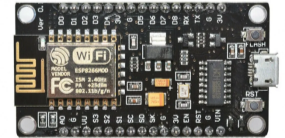This research paper presents the design and implementation of an intelligent large-area irrigation system based on the ESP8266 microcontroller. The system was developed to address the challenges faced by farmers in managing water resources efficiently across extensive agricultural lands. Traditional irrigation methods often led to uneven water distribution, resulting in suboptimal crop yields and financial losses. By leveraging Internet of Things (IoT) technology, this system enabled automated monitoring and control of irrigation based on real-time soil moisture levels, temperature, and humidity. The integration of sensors and a cloud-based platform allowed for remote management and data analysis, significantly improving water usage efficiency and crop health. The results indicated a marked improvement in irrigation practices, showcasing the potential of smart agriculture technologies.
Introduction
Irrigation plays a critical role in modern agriculture, especially in large-scale farming operations where efficient water management is essential for maximizing crop yield and minimizing resource wastage. Traditional irrigation techniques often involve manual labor and can lead to inconsistent watering patterns, which negatively impact plant health and agricultural productivity.
Background of the Study
The increasing global population has heightened the demand for food production, necessitating more efficient agricultural practices. Water scarcity is a pressing concern in many regions, making it imperative for farmers to adopt technologies that optimize water usage. Smart irrigation systems have emerged as viable solutions, utilizing real-time data to make informed decisions about water application.
Problem Statement
Farmers often struggle with managing large areas of land due to the limitations of traditional irrigation methods. These methods can lead to uneven water distribution, resulting in some areas being overwatered while others remain dry. This inefficiency not only affects crop quality but also contributes to increased operational costs.
Objective
The primary aim of this study was to develop an intelligent irrigation system that utilizes IoT technology to automate watering processes based on real-time environmental data.
- To design a cost-effective irrigation system using ESP8266 microcontroller.
- To implement soil moisture sensors for real-time monitoring.
- To create a cloud-based platform for data analysis and remote management.
- To evaluate the effectiveness of the system in improving irrigation efficiency.


Fig. 1. Overview and pin configuration of ESP8266
The study focused on developing an intelligent irrigation system suitable for large agricultural areas. It involved hardware design, software implementation, and field testing to assess the system's performance under varying environmental conditions.
The literature review examined various smart irrigation systems that have been implemented globally. Studies highlighted the effectiveness of using sensor-based technologies in optimizing water usage:
A study by Bhandari et al. proposed a similar IoT-based irrigation system utilizing NodeMCU ESP8266, focusing on soil moisture detection and automated watering.
Other research emphasized the integration of wireless sensor networks for monitoring environmental parameters, although many lacked comprehensive solutions for large-scale applications.
This review underscored the need for advancements in smart irrigation technologies that cater specifically to large-area farming operations.
Key components included:
- ESP8266 NodeMCU
- Soil moisture sensors
- DHT11 temperature and humidity sensor
- Relay module for controlling water pumps
- Power supply unit
Program Code
#include
#include
#define DHTPIN 2 // DHT sensor pin
#define SOIL_MOISTURE_PIN A0 // Soil moisture sensor pin
#define RELAY_PIN 5 // Relay pin for pump control
DHT dht(DHTPIN, DHT11);
void setup() {
Serial.begin(115200);
WiFi.begin("SSID", "PASSWORD");
dht.begin();
pinMode(RELAY_PIN, OUTPUT);
}
void loop() {
float humidity = dht.readHumidity();
int soilMoisture = analogRead(SOIL_MOISTURE_PIN);
if (soilMoisture < threshold) {
digitalWrite(RELAY_PIN, HIGH); // Turn on pump
} else {
digitalWrite(RELAY_PIN, LOW); // Turn off pump
}
delay(60000); // Wait before next reading
}
The implementation of the intelligent irrigation system led to significant improvements in water management across large agricultural fields.
Farmers reported enhanced convenience due to remote monitoring capabilities via a mobile application connected to the cloud server.
The research successfully developed an intelligent large-area irrigation system utilizing ESP8266 technology. The automation provided by this system not only optimized water usage but also improved overall crop health and yield. Future work may explore further enhancements such as integrating weather forecasting data into the irrigation decision-making process.
References:
- Shawky, N. E. M. (2023). IOT- Smart irrigation with tracking system using NodeMCU ESP8266.
- Bhandari, A., Rai, P., & Rathee, A. (2021). Smart irrigation system using IoT. 8(10), 38830. https://doi.org/10.22214/ijraset.2021.38830
- Alsammak, H. N., & Mohammed, Z. S. (2023). A smart IoT-based automated irrigation for farms using Node MCU (ESP 32F ESP8266 MC) and a humidity sensor. 237–248. https://ijisae.org/index.php/IJISAE/article/view/2434
- Pavithra, M. (2019). IoT home automation with PIR sensor security using ESP8266 Wi-Fi chip and GSM. International Journal of Advanced Research in Computer Engineering & Technology, 8(6).

